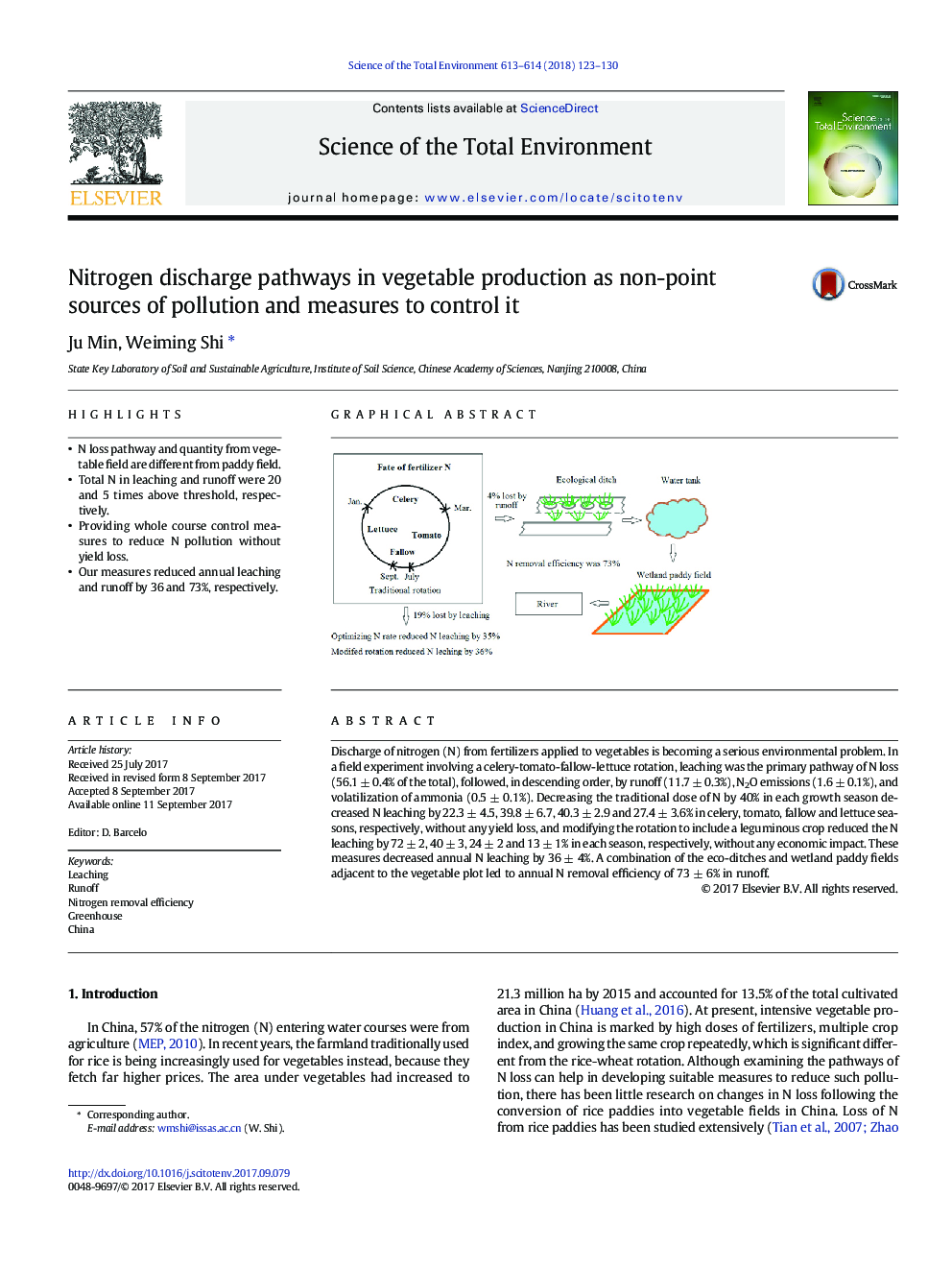| کد مقاله | کد نشریه | سال انتشار | مقاله انگلیسی | نسخه تمام متن |
|---|---|---|---|---|
| 5750073 | 1619690 | 2018 | 8 صفحه PDF | دانلود رایگان |
- N loss pathway and quantity from vegetable field are different from paddy field.
- Total N in leaching and runoff were 20 and 5 times above threshold, respectively.
- Providing whole course control measures to reduce N pollution without yield loss.
- Our measures reduced annual leaching and runoff by 36 and 73%, respectively.
Discharge of nitrogen (N) from fertilizers applied to vegetables is becoming a serious environmental problem. In a field experiment involving a celery-tomato-fallow-lettuce rotation, leaching was the primary pathway of N loss (56.1 ± 0.4% of the total), followed, in descending order, by runoff (11.7 ± 0.3%), N2O emissions (1.6 ± 0.1%), and volatilization of ammonia (0.5 ± 0.1%). Decreasing the traditional dose of N by 40% in each growth season decreased N leaching by 22.3 ± 4.5, 39.8 ± 6.7, 40.3 ± 2.9 and 27.4 ± 3.6% in celery, tomato, fallow and lettuce seasons, respectively, without any yield loss, and modifying the rotation to include a leguminous crop reduced the N leaching by 72 ± 2, 40 ± 3, 24 ± 2 and 13 ± 1% in each season, respectively, without any economic impact. These measures decreased annual N leaching by 36 ± 4%. A combination of the eco-ditches and wetland paddy fields adjacent to the vegetable plot led to annual N removal efficiency of 73 ± 6% in runoff.
98
Journal: Science of The Total Environment - Volumes 613â614, 1 February 2018, Pages 123-130
